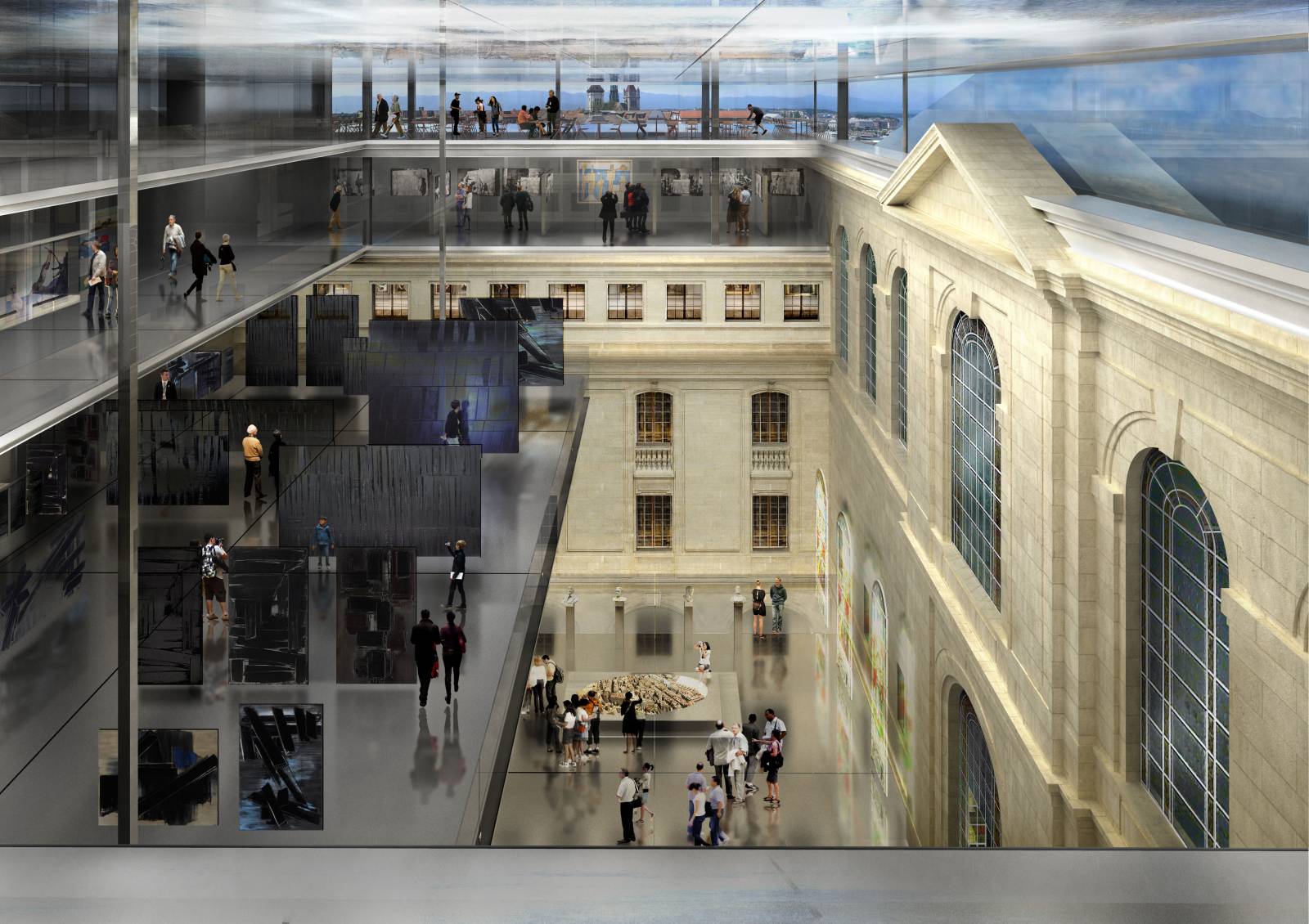- Previous project: Lucerne Culture and Congress Centre (KKL)
- Next project: Expo 2000 – “The Future of Work”
Geneva Museum of Art and History
- Geneva, Switzerland
From Diagnosis to Prescription
The Geneva Museum of Art and History is the city’s most beautiful building in the Beaux-Arts style. It’s a model of its kind. Marc Camoletti, its architect, aimed to give the existing museum a more prestigious urban stature, with a big terrace garden that opened up a broad outlook. The Museum of Art and History houses collections that bear witness to a bygone era… Photographs show the harmonious relationship that once existed between the building and its contents. But the inner courtyard isn’t designed for action, as the architecture of the internal façades makes clear: the treatment is not as evolved as for the main façades.
The Musée des Beaux-Arts is no longer tailored to what we can expect from a museum these days. It lacks appeal, mainly because it has lost that Proustian charm of lost time but hasn’t gained any of the complementary refurbishments and add-ons that make for the effectiveness and allure of the great modern museums.
Having said that, what can we do? There are five operations:
- Bringing out the beauty of the nineteenth-century Beaux-Arts architecture. This is a historic monument. Let’s adhere as far as possible to its historic authenticity and preserve it, spruce it up – right down to the last detail, with the windows, doors, and floors. Let’s be proud of it!
- Ensuring it captures an urban stature in keeping with its creator’s ambition. This means altering its relationship with the grounds. We can take advantage of this necessity to create a transitional structure that’s a link with the grounds, a sign of modernity, an information point, marker, a venue for selling tickets, books, artistic merchandise and also for providing simple, dignified disabled access. This pavilion will ensure the museum fully owns the grounds and the grounds, the museum.
- Cultivating the contrast between this initial reception area and the reception in the museum itself. The great surprise will be a reconstitution of the original fit-out in the museum’s furniture, cloakroom, lights, wall-hangings, and the way it stages history… as if time had stood still, as if we were stepping into this shiny new place at the end of the nineteenth century. The same work will be carried out in the painting galleries, which are extremely beautiful with their overhead lighting. The work is all about historical authenticity and the time gap. But there’ll be no show of nostalgia, no patina of age, no cultivating of dust. The place will be as good as new again!
- Cultivating a second contrast with the building’s new core, which will be a testament to the culture and architecture of the early years of the new century in steel and glass (for tension and transparency). This opened-up space will parse the façades of the inner courtyard to enhance their quality and better show them off and will set up a dialogue between the twentieth and twenty-first centuries, intensifying awareness of the time that has passed. The rooms are large and light-filled. A connecting space with a well-proportioned conference room will be located on the lowest level. The other levels, with the exception of the top level, are ideal for setting up temporary exhibitions unhampered. Above the present rooftop there’ll be a terraced belvedere, and a panoramic restaurant that’s as ‘immaterial’ as can be.
- Turning the emergence light of this central structure into a mysterious sign, so the new pole thus revealed by its program and expression becomes magnetic. The Musée des Beaux-Arts will once more be one of the modern buildings of Geneva.
This prescription can be applied in one or more doses. But to be effective, the full five courses of treatment are indispensable.
Jean Nouvel

